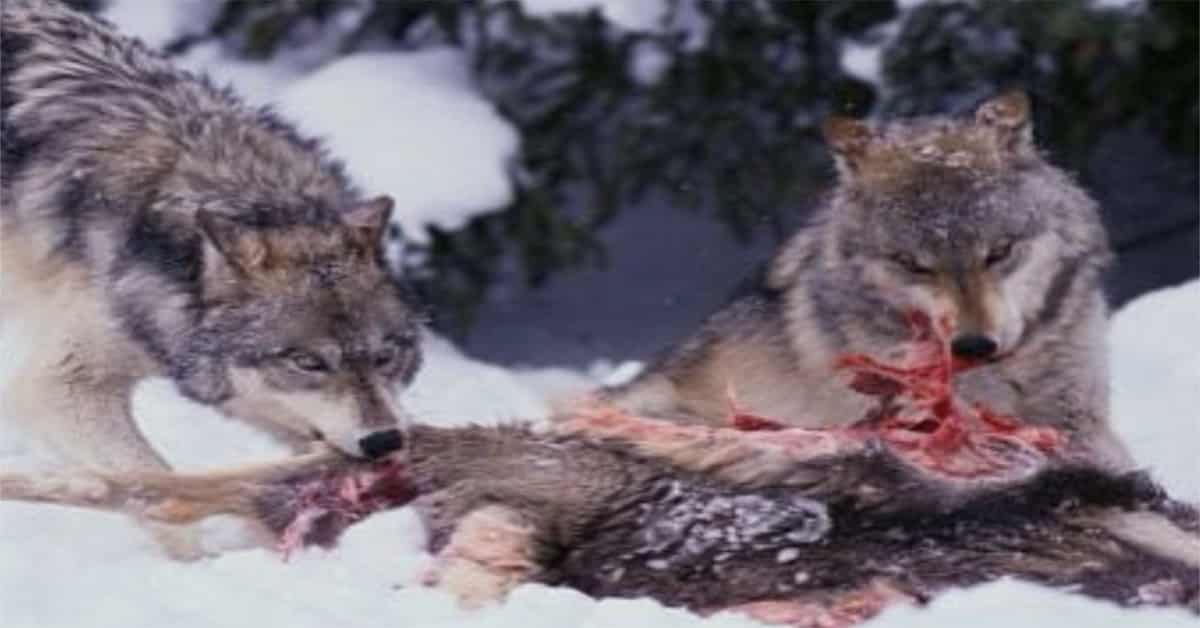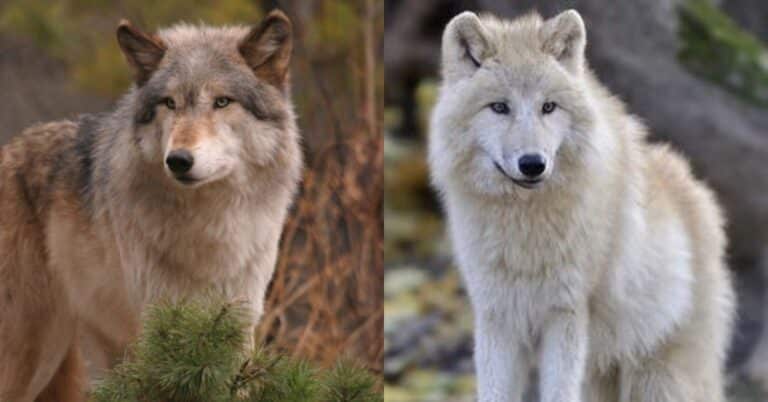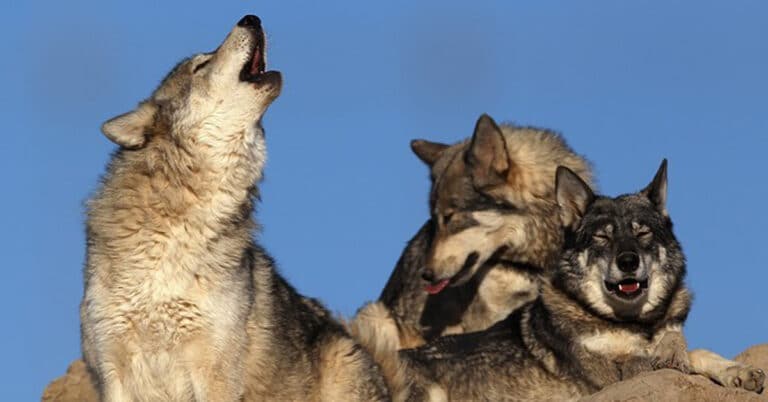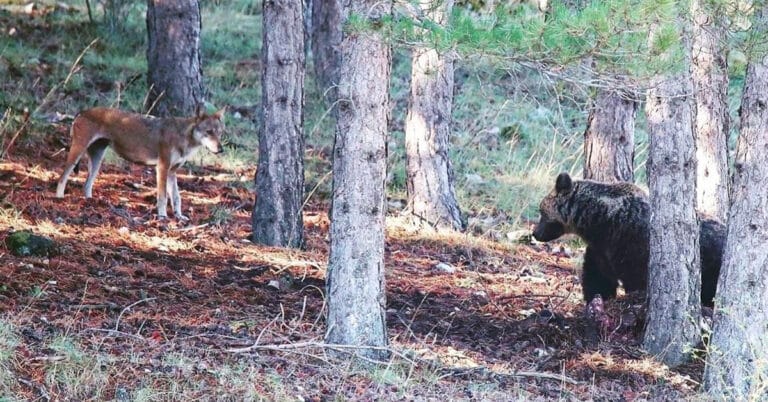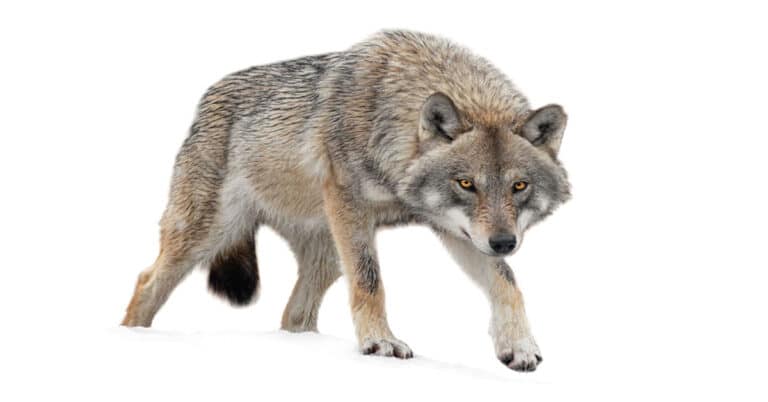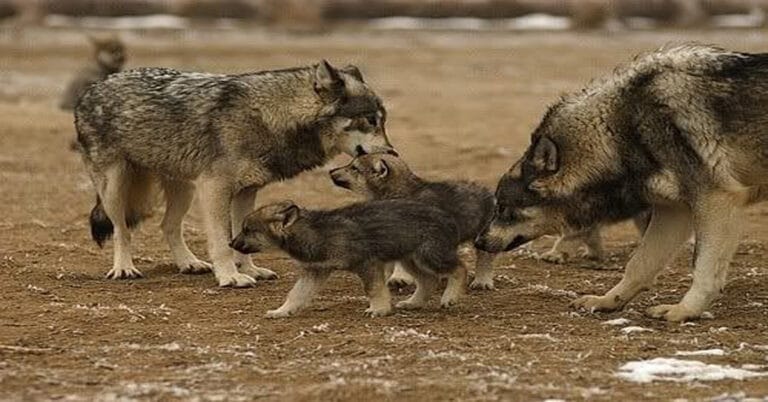What Do Wolves Eat?
Wolves are one of the most widespread animals in the world. They are canine animals, mainly native to Eurasia and North America. In total, more than 30 subspecies of wolves are recognized today. Although they are carnivores, wolves are sometimes referred to as animals that will consume everything available in the wild.
Have you ever wondered what kind of eating habits wolves have and what do wolves eat? Keep reading and let’s explore together what wolves eat.
What Do Wolves Eat?
The living location and environment greatly determine what do wolves eat. Wolves are not picky eaters, though. Even though they generally prefer larger animals, they also enjoy smaller prey. such as:
Also, when they come across it, wolves also consume the eggs of different birds. When these sources of food are insufficient, they feed on:
- Insects
- Frogs
- Snakes
- Lizards
When it is available, these interesting creatures also enjoy eating fish. For example, salmon make up 20% of the diet of coastal wolves in Alaska, 25% of those in British Columbia, and 75% of those on neighboring islands.
Wolves consume fruits including apples, pears, figs, melons, berries, and cherries throughout Europe. Wolves consume raspberries and blueberries in North America. Wolves also consume grass, which may contain some vitamins. In most cases, it is consumed to cause vomiting in order to get rid of waste.
Eating Habits of Wolves
What do wolves eat is greatly affected by their eating habits. Some species, like wolves, store their kills away from the slaughter site. These caches could be as far away as a half mile.
The wolves use their front paws to dig up the animals from underground storage and use their nose to replace the dirt once the meat has been hidden inside. In the cooler northern and Arctic regions, caching is more common. Mammals frequently store food in caches, which they do to preserve the food for later.
A wolf may consume approximately five to twelve pounds of food per day. As animal experts prove, during the winter they can consume up to roughly fourteen pounds of moose. 19 pounds of meat from one meal were spotted being consumed by wolves. They don’t, however, eat every day. An adult wolf may go many days without eating. Besides, wolves may go up to twelve days without eating.
Wolves require fat, protein, and carbs in order to survive and be energetic, much like many other creatures and mammals. What do wolves eat is rich in protein and fat. However, their carbohydrate intake is pretty low.
Wolves do get all the nourishment they need in one meal, and for this reason, they will have to eat several meals. When their bodies signal a need for specific nutrients, wolves will go in search of such foods.
In addition to carrion, wolves also consume excrement. Eventually, it is full of billions of both living and dead bacteria. However, it is interesting that those bacteria provide antioxidants, fiber, fatty acids, enzymes, vitamins, protein, essential fatty acids, minerals, and protein.
Maned Wolf
The maned wolf shares the name with the wolf but is pretty different from it. An interesting fact is that the Maned Wolf resembles a hybrid between a coyote and a hyena. However, their more daring feeding habits also set them apart from any other wolf species.
Maned wolves are omnivorous and typically consume a diet that is composed of a great deal of fruit and vegetables. The berry, known as lobeira, or “fruit of the wolf,” is a particular favorite of theirs. The maned wolf, however, greatly enjoys eating the meat. They consume bigger animals like rats and rabbits, as well as tiny invertebrates.
This can be a result of the fact that they live in a highly competitive environment. Red, gray, and eastern wolves are the three top predators. Maned wolves live in an area that is also home to a number of fox species and other ferocious predators like jaguars and pumas. In captivity, maned wolves will eat around two pounds of food each day.
Red Wolf
Red wolves are a separate species of wolf. However, they are frequently mistaken for coyotes. To compare, they are significantly smaller than gray wolves, measuring just four feet long and weighing 50 to 80 pounds on average. Their body measurements and weight are significant factors in their hunting habits.
Red wolves today face competition from coyotes, which have stepped in to fill the hole left by red wolf extinction. Red wolves typically eat smaller animals and seldom hunt for ungulates, In contrast, gray wolves primarily eat huge ungulates and supplement that with a diet of smaller animals.
The red wolf’s typical diet consists of:
- Rodents
- Raccoons
- Rabbits
- Mice
- Insects
- Berries
Red wolves migrate in small groups, which are often made up of parents and their young. Red wolves may consume two to five pounds of food each day, depending on their needs, so they don’t have the same need for large amounts of prey.
Red wolf groups are fiercely protective of their hunting areas, and while they are normally elusive and secretive carnivores, they are fearless in protecting their habitat. A specific red wolfpack range may extend up to 20 square miles.
Eastern Wolf
Previously thought to be a gray wolf’s subspecies, however, it is now known that eastern wolves are more closely linked to coyotes than to their gray relatives. It is thought that coyotes and eastern wolves interbred to create the species known as the eastern coyote.
The eastern wolf population is declining as a result of shooting and poaching. If it continues like that, there may be more coyote crossbreeding and eventual extinction of the eastern wolf. Those species of wolves are mainly found on the North American continent.
Eastern wolves are often found eating the large hoofed animals alongside the smaller ones. They often pray on white-tailed deer, and they were also noticed to be praying on American black bears. So here is what do wolves eat in the eastern part of the world generally, and what do eastern wolf eats:
- White-tailed Deer
- Elkdeer,
- Moose
- beavers.
- Muskrat
- Mice
Gray Wolf
Gray wolves are the biggest canids on Earth, and their appetites match their size. The typical gray wolf can consume up to 20 pounds of meat at once, but under regular circumstances, they need to consume approximately 4 pounds of meat daily to survive. So it is interesting what do wolves eat in this particular specie?
Gray wolves concentrate their hunting efforts on larger prey. This is mainly because they hunt in packs. To feed their voracious appetites, gray wolves typically hunt ungulates or huge hoofed animals. Moose, white-tail deer, and elk are a few of the more common prey animals that wolves consume.
Wolves are happiest in the winter months. This is due to the increased availability of weak and malnourished prey throughout the winter, as well as the fact that wolves frequently have an advantage over their prey while hunting through snow and tundra. There are more young prey animals around in the early summer, so this is also a generous season for feeding.
Even though gray wolves mainly hunt larger prey, they also consume smaller animals such as hares, raccoons, mice, and beavers. Depending on the level of scarcity, a pack’s area and hunting range can be anywhere from 50 miles to 1,000 miles. Gray wolves, unfortunately, frequently clash with people due to their hunting and eating habits.
Generally, the prey of the gray wolf includes:
- Moose
- White-tail deer
- Elk
- Hares
- Raccoon
- Mouse
- Beaver
How Much Water Do Wolves Consume?
We discussed what do wolves eat, but have you ever wondered how much water wolves consume? A large portion of the needed hydration consumed by wolves comes from their prey. The typical daily water requirement for wolves is between a quarter and three-quarters of a gallon. Depending on their environment, their size, and the species of wolf, the amount of water that is needed may vary.
Additionally, wolves get their liquid from food such as fruits like apples and pears, insects, earthworms, and berries like blueberries and raspberries.
Wolves’ Role In The Ecosystem
Gray and western foxes have been hunted and killed because of their habit of attacking livestock. Consequently, this has reduced their numbers by a lot. However, their effects on the greater environment are far more complex.
Wolves are a very important part of the ecosystem, and what do wolves eat plays a crucial part in controlling the numbers of a wide range of animals because of their opportunistic hunting nature. They specifically target very weak, young, old, and ill prey to maintain healthy levels of those animal populations and reduce the danger of overgrazing. Smaller prey also falls under this category.
Wolves assist in regulating the population of rodents and rabbits because of their prodigious reproductive rates. In particular, the red wolf has come to be known for taking down nutria, a species that is in most places considered pests.
The predators that are often found in these habitats are also impacted by the presence of wolves. Gray and red wolves were historically coyotes’ main rivals, and their declining numbers contributed to the enormous expansion of coyotes outside in many places.
Red foxes are known to vigorously defend their territory from other predators despite their relatively small size. Gray wolves’ leftover carcasses can be used as food by coyotes and foxes, and there has even been evidence of arctic wolves hunting the cubs of polar bears.
Bottom Line – What Do Wolves Eat?
In this article, we discussed what do wolves eat and what their favorite food is. Wolves are carnivores that consume a variety of foods; they have no problem eating anything from moose-sized animals to earthworms.
A wolf’s diet consists largely of elk, deer, sheep, and goats. Their food consists of smaller animals, including beavers, hares, and rabbits. Insects, nuts, fruits, and berries are other common foods eaten by wolves.

Nato is a content writer and researcher with a background in psychology who’s eager to explore the wonders of nature. As a travel enthusiast and animal lover, she hopes to inspire others to discover and cherish the beauty and importance of the natural world.

